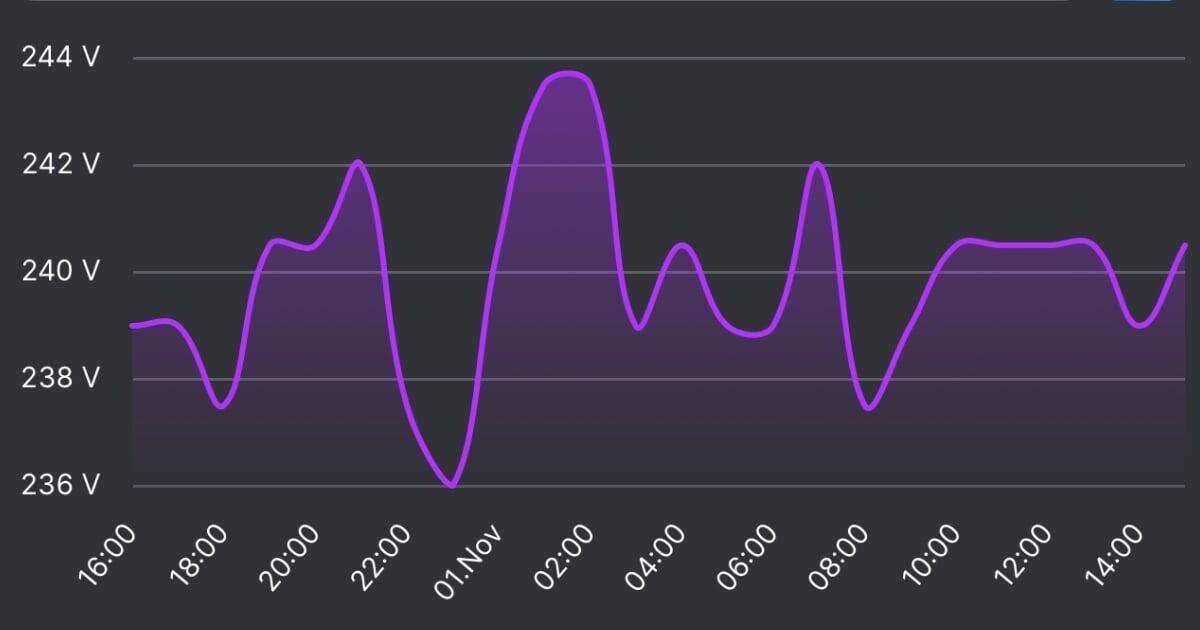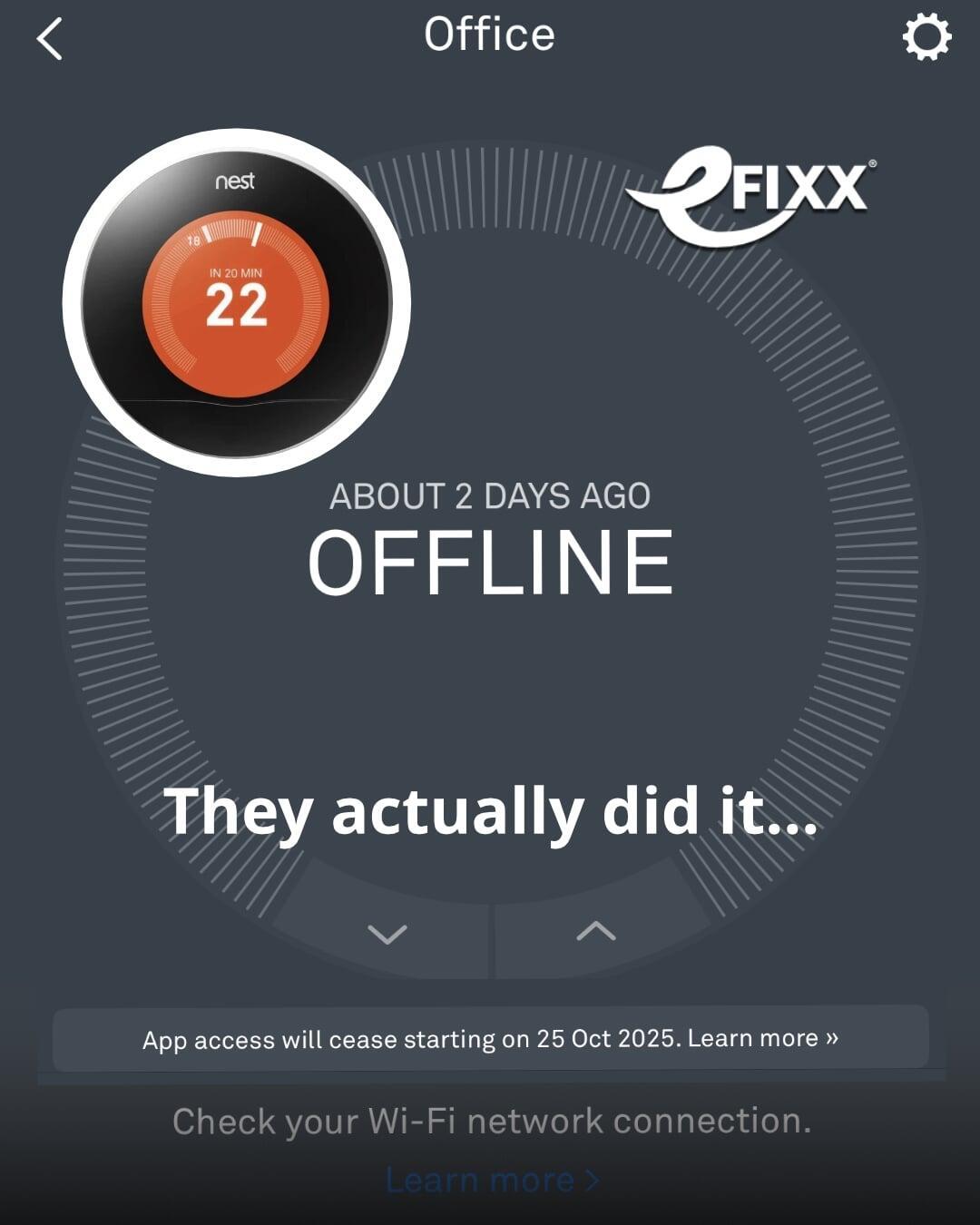Proposed Changes to UK Mains Voltage Limits Explained
By Gordon Routledge
Saturday 1st November 2025
SHARE IT
The grid under pressure
The UK’s power grid is feeling the strain as more homes add electric vehicles, heat pumps, and renewable generation. Many users are already experiencing equipment tripping out due to high line voltages, while households investing in solar and battery storage often find they can’t export as much power as expected.
The reason is simple: network operators must keep voltages within tight limits, and those limits were set long before today’s surge in two-way energy flow.

A brief history of UK voltage limits
For decades, the UK’s mains supply was set at a nominal 240 volts, with a tolerance of ±6%, meaning anything between 226 and 254 volts was acceptable.
In the mid-1990s, as part of a European-wide effort to harmonise electrical standards, the UK adopted a new nominal voltage of 230 volts. Rather than rebuilding the network, the tolerance was widened to +10% / −6%, creating a new acceptable range of 216 to 253 volts.
In practice, very little changed. Most households continued to see voltages above 240 volts, because the network was designed to run “high” to counteract voltage drop during heavy demand.
Why Europe harmonised at 230 volts
The move to a 230-volt nominal supply wasn’t driven by engineering necessity but by practicality. Before harmonisation, the continent was split: some countries used 220 volts, others 240 volts. That forced appliance manufacturers to produce different models for different markets.
By agreeing on a single 230-volt standard, Europe made it possible to design one product line that would work safely and efficiently everywhere. The wide tolerance range ensured both 220- and 240-volt systems remained compliant, paving the way for global standardisation of electrical equipment.
Nest + HomeKit: The Smart Home Combo Google Never Wanted
What’s being proposed now
Nearly thirty years later, the UK’s Distribution Network Operators (DNOs), through the Energy Networks Association (ENA), are consulting on the next step: to fully align with the European voltage standard of 230 volts ±10%, giving a working range of 207 to 253 volts.
The current UK standard uses a tighter lower limit of −6% (216 volts), so the proposal would simply extend that to −10%, creating a little extra room at the bottom of the range.
This change recognises how the grid now behaves. Historically, voltage fell as demand increased, so DNOs operated toward the upper end of the range. Today, with solar PV and other distributed generation feeding power back into the system, voltage often rises instead. That leaves very little headroom before reaching the statutory upper limit of 253 volts, which can cause EV chargers and inverters to trip in self-protection mode.
To create that breathing space, DNOs propose to reduce the average network voltage by about two percent, roughly five volts, introduced gradually in two one-percent steps.
For most users, this change will be imperceptible. Modern appliances have been designed for 230-volt operation for decades, and no rewiring or adjustments will be needed. But the benefits could be significant: fewer nuisance trips, more headroom for renewable generation, and extra grid capacity without adding cost to consumers.

What this means in real life
If your supply typically sits around 240 volts today, it may settle closer to 235 volts once the proposal is implemented, still comfortably above the 230-volt nominal standard.
The reduction won’t require any changes inside homes or businesses, but it will rely on adjustments made by Distribution Network Operators. At present, voltage is managed in a top-down approach: operators control the voltage at higher-voltage levels, which in turn influences the output of local substations supplying homes and businesses.
In some newer substations, dynamic voltage regulation systems are already in place, allowing real-time adjustments to balance voltage with local demand and generation. However, these installations are the exception rather than the rule. Upgrading every substation across the country with this technology would take decades and involve significant cost.
By contrast, the proposed changes could be implemented relatively quickly and inexpensively. In most cases, DNOs would “tap down” the transformer windings at existing substations to lower output voltage slightly, a mechanical adjustment that sets a new operating point closer to 235 volts.
Voltage naturally fluctuates throughout the day. When everyone’s using high-energy appliances such as cookers, showers, or EV chargers, voltage tends to dip as the network carries heavier load. On sunny days, when solar inverters are exporting power back to the local network and demand is low, voltages can rise, sometimes brushing the upper statutory limit of 253 volts.
Starting from a slightly lower base level provides valuable headroom to manage those swings, helping to prevent over-voltage trips and making it easier to connect more renewables without breaching the legal limits.
How voltage variation affects appliances
A frequent question is whether lowering the voltage will affect how equipment performs. The answer depends on the type of load, but for most modern devices, it won’t make any noticeable difference.
Resistive appliances
For heating appliances such as kettles, toasters, and immersion heaters, power output depends on voltage squared (P = V²/R). A small drop in voltage causes only a minor drop in heating power.
A kettle rated at 2 kW at 240 V would produce about 1.92 kW at 235 V, roughly 4% less power. That means boiling a litre of water might take around seven seconds longer, an almost imperceptible difference compared with other factors like water temperature or limescale.
Constant-power appliances
Most modern electronics, including TVs, computers, LED lighting, and smart devices, use switch-mode power supplies (SMPS) that automatically adjust current draw to maintain constant power.
When voltage drops slightly, these devices simply draw a bit more current. For example, a 100-watt TV at 240 V draws 0.42 A; at 235 V, it draws 0.43 A, a 2% increase, far too small to matter.
Because these appliances regulate their internal power, they continue to operate identically across a wide voltage range (typically 100–250 V). There’s no dimming, no flicker, and no performance change.
Where could there be problems?
While the vast majority of users and installations will be unaffected, there are some edge cases where the lower voltage limit could create challenges.
Backup systems such as uninterruptible power supplies (UPS) and standby generators sometimes treat voltages below 216 V as a brown-out or power-failure condition. Extending the lower limit to 207 V means these systems might occasionally interpret a normal low voltage as an outage, triggering unnecessarily unless settings are revised.
Certain older installations with motors designed for 240 V could see a small reduction in starting torque and a slight increase in current draw, particularly on long circuits or sites with significant voltage drop.
Lower nominal voltages can also influence protection design. Under BS 7671, changes in supply voltage affect fault-loop impedance and MCB tripping times, so designers and testers will need to consider the revised figures when assessing compliance.
Finally, properties already suffering from low voltage, such as rural homes at the end of long distribution lines or large industrial sites with extensive internal cabling, may need closer monitoring.
These installations could see voltages approaching the new lower limit, so proactive checks and engagement with the local DNO will be essential.
The road ahead for the UK’s low-voltage distribution network
Thousands of installations across the UK are already experiencing high-voltage issues today. For many households, that means solar inverters disconnecting, EV chargers tripping, or sensitive electronics shutting down as protection kicks in. These aren’t rare edge cases; they’re becoming common symptoms of a network designed for a one-way power flow now being asked to run in both directions.
By contrast, low-voltage problems affect a much smaller number of users, typically those at the end of long rural lines or on heavily loaded feeders. The challenge for the industry is finding the right balance: deciding where to target investment to mitigate low-voltage risks while still tackling the much larger and growing problem of voltages running too high.
The truth is, it’s not an either-or decision. The UK will need to do both — upgrading parts of the network to support remote or voltage-sensitive customers, while modernising voltage control to handle renewables, EVs, and the next generation of electrical loads. What’s clear is that doing nothing isn’t an option.
This proposed voltage reduction is one of the few measures that can be implemented quickly and affordably, using the infrastructure that already exists. It creates space for a smarter, more flexible grid where local generation and storage can actively help to stabilise voltage rather than disrupt it.
To move forward, the proposal will require an update to the Electricity Safety, Quality and Continuity Regulations (ESQCR), a statutory instrument that must pass through the House of Commons before any changes take effect.
eFIXX will continue to follow the consultation as it progresses, providing updates and analysis on how these changes could reshape the UK’s low-voltage network for decades to come.
SHARE IT
CURRENT THINKING
V2G: The Vicar’s Wife Drove it; Now it Runs Your House.
The term game changer gets thrown around like confetti, but with vehicle to grid (V2G) it’s deserved. Your EV is a battery on wheels. With a compatible car and the right charger, vehicle to grid (V2G) will run your home, support the grid, and might even boil the neighbour’s kettle.
TradeKart: The App Delivering Materials in 30 Minutes
It’s 3pm on a Friday, you’re mid-install and run out of the one thing you need to finish the job. Normally that’s game over - but not with TradeKart. Built for trades, it delivers tools and materials to site in 30 minutes, keeping you working, not waiting.




